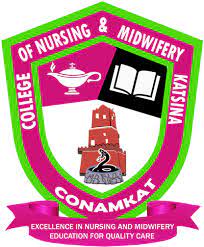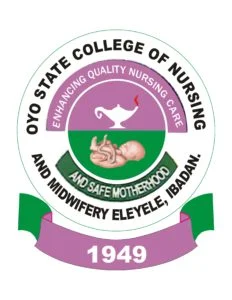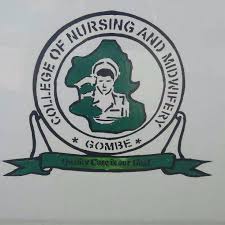IJMB Chemistry 103 Practical Past Questions 2023; This Chemistry 103 Practical Past Questions is suitable for students about to sit for the upcoming IJMB EXAMINATION. Students should be informed that IJMB is an advanced-level program that helps students secure admission into the university of their choice without JAMB.
IJMB Chemistry 103 Practical Past Questions 2023
Recommended; See Other IJMB Past Questions Here
INTERIM JOINT MATRICULATION BOARD EXAMINATION 2023
SUBJECT: CHEMISTRY PAPER IIIA: ( ALTERNATIVE A)
DATE SCHEDULED: TUESDAY 20th JULY, 2023
TIME ALLOWED: THREE HOURS (3 HRS)
INSTRUCTIONS:
i. Answer ALL questions. Question (1) carries 50 marks while question (2) carries 30 marks. Textbooks, practical manuals and any other instructional materials are PROHIBITED in the examination hall.
ii. The use of a scientific programmable calculator is NOT ALLOWED.
iii. The atomic masses of the following elements are provided:
H = 1, C =12, O = 16, Mn = 55, K = 39, Na = 23, S = 32
- You are provided with the following;
Solution A is an aqueous solution of tetraoxomaganate(VII), KMnO4 previously standardized and containing 0.60 g of KMnO4 in 250cm3 of solution.
Solution B is an aqueous solution of ethanediol acid (oxalic acid), H2C2O4 whose concentration is unknown.
Solution C contains 2 mole dm-3 of tetraphosphate (VI) acid, H2SO4.
- Procedure
i) Rinse your burette with solution A and fill it with the same solution. Record your initial reading by recording the upper meniscus of the burette.
ii) Pipette 20 or 25 cm3 of solution B to a clean conical flask and add to it about 15 cm3 of solution C using a measuring cylinder. Swirl to mix and warm the mixture until it is about to boil.
iii) From the burette, run solution A into the content of the conical flask until a permanent faint paint color is observed.
iv) Repeat (ii) and (iii) twice more with fresh portions of 20 or 25 cm3 of solution B.(16 marks)
v) calculate the average titer.(2marks)
vi) Balance the reaction equation (2marks)
MnO4– + C2O42- + H+ Ma2+ + CO2 + H2O
- From your results, calculate the;
i) amount in grams dm-3 of solution A; (3marks)
ii) amount in moles dm-3 of solution A; (3marks)
iii) amount in moles of solution A titrated; (3 marks)
iv) amount in moles of solution B consumed;(5marks)
v) amount in moles dm-3 of solution B; (3marks)
vi) amount in grams dm-3 of solution B.(5marks)
C) State one use of the following in a laboratory: ( 3marks)
(i) Buchner funnel; (ii) Wash bottle; (iii) Round bottom flask.
D) Define the reducing agent in terms of; (3marks)
(i) oxidation number; (ii) electron transfer; (iii) transfer of hydrogen atom.
2. Carry out the test and record your observations and inferences clearly,using the normal laboratory format. Credit will be given for Careful observations clearly recorded and Explanatory Note to account for observed reactions.
- You are provided with sample A1 = Barium chloride.
- Carry out two (2) distinguishing tests for the cation
- Carry out two (2) distinguishing tests for the anion.
B. You are asked to identify the functional group present in two (2) organic
Compounds [ A2 and A3 ]. Each compound will be treated with four
different reagents and appropriate observations made.
Prepare a saturated solution of each of samples A2 and A3 in ethanol
Separately and use the solution for the following tests
TEST 1 Litmus paper
i) Pour a small portion of compound A2 solution into a test tube.
ii) Test with blue litmus paper
iii) Record all observations
iv) Repeat the procedure for Compound A3
TEST 2 Hydrogen carbonate solution
i) Pour a small portion of compound A2 solution into a test tube
ii) Add an aqueous solution of NaHCO3 drop-by-drop
iii) Test any gas evolved with lime water
iv) Record all observations
v) Repeat all procedures for compound A3
TEST 3 Dinitrophenylhyrazine
i) Pour a small portion of compound A2 solution into a test tube
ii) Add about 2 ml of a saturated solution of 2,4- dinitrophenylhydrazine
and shake well.
iii) Warm the mixture on a water bath for 2mintues and allow it cool
iv) Record all observations
v) Repeat the procedure for compound A3.
TEST 4 Schiff’s reagent
i) Pour a small portion of compound A2 solution into a test tube
ii) Add about 2 ml of schiff’s reagent and shake well
iii) Allow the mixture to stand for 2 minutes
iv) Record all observations
v) Repeat the procedure for compound A3
Copy and complete the following table in your answer booklet:






